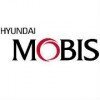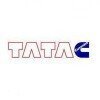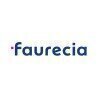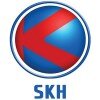Filter interviews by
Autocomp Corporation Panse Interview Questions and Answers
29 Interview questions
KPI stands for Key Performance Indicator, a measurable value that demonstrates how effectively an organization is achieving key objectives.
KPIs are used to evaluate success at reaching targets.
They can be financial (e.g., revenue growth) or non-financial (e.g., customer satisfaction).
Examples include Net Promoter Score (NPS) for customer loyalty and Return on Investment (ROI) for financial performance.
KPIs should ...
FIFO stands for First In, First Out, a method for managing data or inventory where the oldest items are processed first.
FIFO is commonly used in data structures like queues, where the first element added is the first to be removed.
In inventory management, FIFO ensures that older stock is sold before newer stock, reducing spoilage.
Example: In a grocery store, perishable items like fruits and vegetables are sold usi...
POKAYOKE is a Japanese term for error-proofing processes to prevent mistakes in manufacturing and service industries.
Originated in Japan, particularly in Toyota's production system.
Involves designing processes to eliminate or reduce human errors.
Examples include jigs that ensure parts are assembled correctly.
Color-coded components that only fit in specific configurations.
Visual aids or alarms that alert workers to...
PPI stands for Producer Price Index, measuring average changes in selling prices received by domestic producers over time.
PPI tracks price changes from the perspective of the seller, unlike CPI which focuses on consumer prices.
It is used to gauge inflation at the wholesale level, impacting economic policy and business decisions.
For example, a rise in PPI may indicate future increases in consumer prices as producer...
Safety is the condition of being protected from harm, danger, or injury in various environments and situations.
Safety involves risk assessment and management to prevent accidents.
In engineering, safety protocols ensure machinery operates without causing harm.
Examples include using safety gear like helmets and gloves on construction sites.
In the workplace, safety training helps employees recognize hazards.
Emergency...
8D refers to the Eight Disciplines problem-solving methodology used to identify, correct, and eliminate recurring problems.
1. Team-oriented approach: Involves cross-functional teams to address issues.
2. Problem identification: Clearly define the problem and its impact.
3. Root cause analysis: Use tools like Fishbone diagrams to find the root cause.
4. Implement corrective actions: Develop and implement solutions to ...
Cycle time, takt time, and lead time are key metrics in manufacturing and project management that measure efficiency and production rates.
Cycle Time: The total time to complete one cycle of a process, e.g., 30 minutes to assemble a product.
Takt Time: The maximum allowable time to produce a product to meet customer demand, e.g., 60 minutes if demand is 8 units per hour.
Lead Time: The total time from the start of a ...
Manpower handling involves the effective management and allocation of human resources to optimize productivity and efficiency.
Involves planning and organizing workforce tasks.
Ensures the right skills are matched to the right jobs.
Includes training and development for skill enhancement.
Example: Assigning engineers to projects based on expertise.
Focuses on safety and ergonomics in physical tasks.
A bottleneck is a point of congestion in a process that slows down overall performance and efficiency.
In manufacturing, a slow machine can delay the entire production line.
In software, a single-threaded process can limit the speed of an application.
In traffic, a narrow road can cause delays for all vehicles.
In project management, a lack of resources can slow down project completion.
TPM stands for Total Productive Maintenance, a holistic approach to equipment maintenance that maximizes productivity.
TPM aims to improve equipment effectiveness by involving all employees.
It includes proactive maintenance strategies to prevent breakdowns.
Example: Autonomous maintenance allows operators to take care of routine maintenance tasks.
TPM focuses on continuous improvement through data analysis and feedba...
Autocomp Corporation Panse Interview Experiences
17 interviews found
I appeared for an interview in Nov 2024, where I was asked the following questions.
- Q1. What is OEE ?
- Ans.
OEE (Overall Equipment Effectiveness) measures manufacturing productivity by evaluating availability, performance, and quality.
OEE is calculated as: OEE = Availability x Performance x Quality.
Availability considers downtime; for example, if a machine is down for maintenance, it affects OEE.
Performance measures the speed of production; if a machine runs slower than its maximum speed, it impacts OEE.
Quality assesses the ...
- Q2. What is TPM
- Ans.
TPM stands for Total Productive Maintenance, a holistic approach to equipment maintenance that maximizes productivity.
TPM aims to improve equipment effectiveness by involving all employees.
It includes proactive maintenance strategies to prevent breakdowns.
Example: Autonomous maintenance allows operators to take care of routine maintenance tasks.
TPM focuses on continuous improvement through data analysis and feedback.
It...
- Q3. What is Losses?
- Ans.
Losses refer to the reduction in value or efficiency in systems, often due to inefficiencies, failures, or external factors.
In engineering, losses can occur in energy systems, such as heat loss in electrical circuits.
Mechanical systems may experience friction losses, reducing efficiency.
In financial contexts, losses refer to the decrease in asset value or profit, such as investment losses.
In manufacturing, material los...
- Q4. What is KPI ?
- Ans.
KPI stands for Key Performance Indicator, a measurable value that demonstrates how effectively an organization is achieving key objectives.
KPIs are used to evaluate success at reaching targets.
They can be financial (e.g., revenue growth) or non-financial (e.g., customer satisfaction).
Examples include Net Promoter Score (NPS) for customer loyalty and Return on Investment (ROI) for financial performance.
KPIs should be sp...
- Q5. What is line balancing?
- Ans.
Line balancing is the process of optimizing production efficiency by evenly distributing tasks across workstations.
Aims to minimize idle time and maximize productivity.
Involves assigning tasks to workstations based on cycle time.
Example: In an assembly line, tasks are divided so each station has equal workload.
Helps in reducing bottlenecks and improving workflow.
Utilized in manufacturing, service industries, and projec...
- Q6. What is manpower handling?
- Ans.
Manpower handling involves the effective management and allocation of human resources to optimize productivity and efficiency.
Involves planning and organizing workforce tasks.
Ensures the right skills are matched to the right jobs.
Includes training and development for skill enhancement.
Example: Assigning engineers to projects based on expertise.
Focuses on safety and ergonomics in physical tasks.
- Q7. What is cycle time, takt time & lead time?
- Ans.
Cycle time, takt time, and lead time are key metrics in manufacturing and project management that measure efficiency and production rates.
Cycle Time: The total time to complete one cycle of a process, e.g., 30 minutes to assemble a product.
Takt Time: The maximum allowable time to produce a product to meet customer demand, e.g., 60 minutes if demand is 8 units per hour.
Lead Time: The total time from the start of a proce...
- Q8. What is bottle neck?
- Ans.
A bottleneck is a point of congestion in a process that slows down overall performance and efficiency.
In manufacturing, a slow machine can delay the entire production line.
In software, a single-threaded process can limit the speed of an application.
In traffic, a narrow road can cause delays for all vehicles.
In project management, a lack of resources can slow down project completion.
- Q9. What is why why analysis?
- Ans.
Why-Why Analysis is a problem-solving technique that identifies root causes by repeatedly asking 'why' to uncover underlying issues.
Involves asking 'why' multiple times (typically five) to drill down to the root cause of a problem.
Example: If a machine breaks down, ask 'why?' it broke down, then continue asking 'why?' for each subsequent answer.
Helps in identifying systemic issues rather than just addressing symptoms.
U...
- Q10. What is 5 S?
- Ans.
5S is a workplace organization method that improves efficiency and safety through five key principles.
Sort (Seiri): Remove unnecessary items from the workspace. Example: Discarding outdated tools.
Set in Order (Seiton): Organize tools and materials for easy access. Example: Labeling storage areas.
Shine (Seiso): Clean the workspace regularly to maintain a tidy environment. Example: Daily cleaning routines.
Standardize (Se...
- Q11. What is PPI ?
- Ans.
PPI stands for Producer Price Index, measuring average changes in selling prices received by domestic producers over time.
PPI tracks price changes from the perspective of the seller, unlike CPI which focuses on consumer prices.
It is used to gauge inflation at the wholesale level, impacting economic policy and business decisions.
For example, a rise in PPI may indicate future increases in consumer prices as producers pas...
- Q12. What is FIFO ?
- Ans.
FIFO stands for First In, First Out, a method for managing data or inventory where the oldest items are processed first.
FIFO is commonly used in data structures like queues, where the first element added is the first to be removed.
In inventory management, FIFO ensures that older stock is sold before newer stock, reducing spoilage.
Example: In a grocery store, perishable items like fruits and vegetables are sold using FI...
- Q13. What is 4M ?
- Ans.
4M refers to the four key elements in manufacturing: Man, Machine, Material, and Method.
Man: The workforce involved in the production process, e.g., skilled laborers.
Machine: The equipment and tools used in manufacturing, e.g., CNC machines.
Material: The raw materials required for production, e.g., steel, plastic.
Method: The processes and techniques used to manufacture products, e.g., assembly line.
- Q14. What is 8 D ?
- Ans.
8D refers to the Eight Disciplines problem-solving methodology used to identify, correct, and eliminate recurring problems.
1. Team-oriented approach: Involves cross-functional teams to address issues.
2. Problem identification: Clearly define the problem and its impact.
3. Root cause analysis: Use tools like Fishbone diagrams to find the root cause.
4. Implement corrective actions: Develop and implement solutions to addre...
- Q15. What is POKAYOKE?
- Ans.
POKAYOKE is a Japanese term for error-proofing processes to prevent mistakes in manufacturing and service industries.
Originated in Japan, particularly in Toyota's production system.
Involves designing processes to eliminate or reduce human errors.
Examples include jigs that ensure parts are assembled correctly.
Color-coded components that only fit in specific configurations.
Visual aids or alarms that alert workers to pote...
- Q16. What is KAIZEN?
- Ans.
KAIZEN is a Japanese philosophy focused on continuous improvement in processes, products, and workplace culture.
Originated in Japan post-World War II, emphasizing efficiency and quality.
Involves all employees in the improvement process, fostering teamwork.
Utilizes small, incremental changes rather than large-scale transformations.
Example: A manufacturing team implementing daily stand-up meetings to discuss process impr...
- Q17. What is Safety?
- Ans.
Safety is the condition of being protected from harm, danger, or injury in various environments and situations.
Safety involves risk assessment and management to prevent accidents.
In engineering, safety protocols ensure machinery operates without causing harm.
Examples include using safety gear like helmets and gloves on construction sites.
In the workplace, safety training helps employees recognize hazards.
Emergency proc...
Interview Preparation Tips
(2 Questions)
- Q1. Introduction and nothing
- Q2. Don’t have any idea of testing
- Q1. About your job responsibilities
- Q2. Say something about stamping line welding robotics
I applied via Shine and was interviewed in Aug 2023. There were 4 interview rounds.

(2 Questions)
- Q1. What Is PFMEA and PFD. What Is 5s What is Kaizen What is TPM What is NC handling procedure in last company.
- Ans.
PFMEA stands for Process Failure Mode and Effects Analysis, PFD stands for Process Flow Diagram. 5S is a workplace organization method, Kaizen is continuous improvement, TPM is Total Productive Maintenance.
PFMEA is a structured approach to identifying and prioritizing potential failure modes in a process.
PFD is a visual representation of how a process works, showing the steps and flow of materials or information.
5S is ...
- Q2. How can you satisfy to the costomer. What is torque range for m5 square buts after projection welding.
- Ans.
To satisfy customers, ensure quality products, timely delivery, excellent customer service, and continuous improvement. Torque range for M5 square nuts after projection welding varies based on material and application.
Ensure quality products by conducting thorough quality checks and inspections.
Deliver products on time to meet customer deadlines and expectations.
Provide excellent customer service by addressing any conc...
(1 Question)
- Q1. What was the product of last company. What was the process How many people you have handled
(1 Question)
- Q1. Where are you from. What is your permanent and current resident. Have your home owned or rented. Are married. How many child you have. What is your expectation. Is it negotiable. When can you join.
Interview Preparation Tips
- TPM
- QMS
- Six Sigma
- Lean Manufacturing
- Manpower Handling
- OEE Calculation
I applied via Referral and was interviewed in Sep 2023. There were 2 interview rounds.

(5 Questions)
- Q1. What Is GST composition? What is gst eligibility less than or upper than? Account type? What is GSTR1, GSTR2 and GSTR3? Different is GSTR1 and GSTR3? What is data reconciliation in gst form? What is golden...
- Ans.
GST composition is a scheme for small businesses with turnover less than a certain amount to pay a fixed percentage of their turnover as tax.
GST composition is a scheme for small businesses with turnover less than a certain amount to pay a fixed percentage of their turnover as tax
GST eligibility is determined based on the turnover of the business, with different rates for businesses with turnover less than or greater t...
- Q2. What does account mean? What about the sap? What happen to transaction code in sap software?
- Ans.
An account in finance refers to a record of financial transactions, SAP is a software used for managing business operations, and transaction codes in SAP are shortcuts for executing specific functions.
An account in finance is a record of financial transactions related to a specific entity or activity.
SAP is a software system used by businesses for managing various operations such as finance, sales, and production.
Trans...
- Q3. What is the difference between tally and sap?
- Ans.
Tally is a basic accounting software used for small businesses, while SAP is an advanced enterprise resource planning software used by large corporations.
Tally is designed for small businesses, while SAP is designed for large corporations.
Tally is more affordable and easier to use compared to SAP.
SAP offers more advanced features such as supply chain management and customer relationship management.
Tally is suitable for...
- Q4. What is difference between busy and tally?
- Ans.
Busy is an accounting software while Tally is an accounting software widely used in India.
Busy is an accounting software developed by Busy Infotech Pvt. Ltd. and is popular in countries like Nepal, Bangladesh, and Sri Lanka.
Tally is an accounting software developed by Tally Solutions and is widely used in India for managing financial transactions.
Both Busy and Tally offer features like inventory management, invoicing, ...
- Q5. When to file gst return month wise fix date?
- Ans.
GST returns are filed monthly on a fixed date based on the type of taxpayer.
GST returns for regular taxpayers are filed monthly by the 20th of the following month.
GST returns for composition scheme taxpayers are filed quarterly by the 18th of the month following the quarter.
GST returns for input service distributors are filed monthly by the 13th of the following month.
Late filing of GST returns can attract penalties an...
Interview Preparation Tips
Fully Confidence.
Clearly Questions and Answering.
Clearly Voice.
Contact Eye to Eye.
Skills evaluated in this interview
I applied via Company Website and was interviewed before Apr 2023. There were 2 interview rounds.
(2 Questions)
- Q1. Where you from?
- Q2. What is your plan after b.tech ?
- Ans. Doing a great job related to my studies at right place.
(3 Questions)
- Q1. How many subjects are in b.tech?
- Ans. Total subject are in b.tech 40.
- Q2. How can I calculate weight of a rectangular or any shape of sheet made of iron.
- Ans.
The weight of a sheet made of iron can be calculated by multiplying the volume of the sheet by the density of iron.
Calculate the volume of the sheet by multiplying its length, width, and thickness.
Determine the density of iron, which is typically around 7.87 g/cm^3.
Multiply the volume of the sheet by the density of iron to get the weight in grams or kilograms.
- Q3. Difference between yield strength and tensile strength.
- Ans.
Yield strength is the point at which a material permanently deforms, while tensile strength is the maximum stress a material can withstand before breaking.
Yield strength is the stress at which a material begins to deform plastically.
Tensile strength is the maximum stress a material can withstand before breaking.
Yield strength is lower than tensile strength.
Yield strength is used to design structures to avoid plastic de...
(1 Question)
- Q1. What is 5 s
- Ans.
5S is a methodology used to organize a workplace for efficiency and effectiveness by identifying, sorting, setting in order, shining, and standardizing.
5S stands for Sort, Set in Order, Shine, Standardize, Sustain
It is a lean manufacturing tool aimed at improving workplace organization and efficiency
Example: Sorting through tools and materials to remove unnecessary items and organizing the remaining items in a logical ...
Interview Preparation Tips
I applied via Walk-in and was interviewed in Oct 2023. There was 1 interview round.
About to your previous company, work , responsibility, etc
Interview Preparation Tips
I appeared for an interview before Jun 2024, where I was asked the following questions.
- Q1. 7 QC Tools
- Q2. 5 core tool
- Q3. ISO and IATF
- Q4. TPM and customer handling
- Q5. Sheet metal quality
- Q6. Press shop quality
- Q7. Spot welding process and defect control
- Q8. Mig welding process and defect control
- Q9. Panel checker and report
- Q10. Layout inspection through various instruments
- Ans.
Layout inspection involves using various instruments to ensure design accuracy and compliance in manufacturing processes.
Calipers: Used for measuring dimensions like length, width, and depth with high precision.
Micrometers: Ideal for measuring small distances and thicknesses, often used in mechanical parts.
Gauges: Such as height gauges or depth gauges, help in checking vertical and horizontal alignments.
Optical Compara...
- Q11. Instrument and least count
- Q12. Process control
- Q13. Internal audit & external audit
I applied via Approached by Company
(2 Questions)
- Q1. TPM related to any questions
- Q2. Technical related questions
Interview Preparation Tips
Top trending discussions






Autocomp Corporation Panse Interview FAQs
Some of the top questions asked at the Autocomp Corporation Panse interview -
The duration of Autocomp Corporation Panse interview process can vary, but typically it takes about less than 2 weeks to complete.
Tell us how to improve this page.
Autocomp Corporation Panse Interviews By Designations
- Autocomp Corporation Panse Senior Quality Assurance Engineer Interview Questions
- Autocomp Corporation Panse Engineer Interview Questions
- Autocomp Corporation Panse Quality Engineer Interview Questions
- Autocomp Corporation Panse Production Engineer Interview Questions
- Autocomp Corporation Panse Store Executive Interview Questions
- Autocomp Corporation Panse HR Executive Interview Questions
- Autocomp Corporation Panse Graduate Engineer Interview Questions
- Autocomp Corporation Panse Junior Electrical Maintenance Engineer Interview Questions
- Show more
Interview Questions for Popular Designations
Overall Interview Experience Rating
based on 23 interview experiences
Difficulty level
Duration
Interview Questions from Similar Companies
Autocomp Corporation Panse Reviews and Ratings
based on 283 reviews
Rating in categories
|
Quality Engineer
96
salaries
| ₹1.5 L/yr - ₹4.2 L/yr |
|
Junior Engineer
67
salaries
| ₹1.8 L/yr - ₹4.5 L/yr |
|
Production Engineer
59
salaries
| ₹2.2 L/yr - ₹4.8 L/yr |
|
Store Executive
47
salaries
| ₹2.2 L/yr - ₹5 L/yr |
|
Assistant Manager
40
salaries
| ₹5 L/yr - ₹10.6 L/yr |

Delphi TVS

Motherson Automotive Technologies and Engineering

Belrise Industries

Krishna Maruti
- Home >
- Interviews >
- Autocomp Corporation Panse Interview Questions













